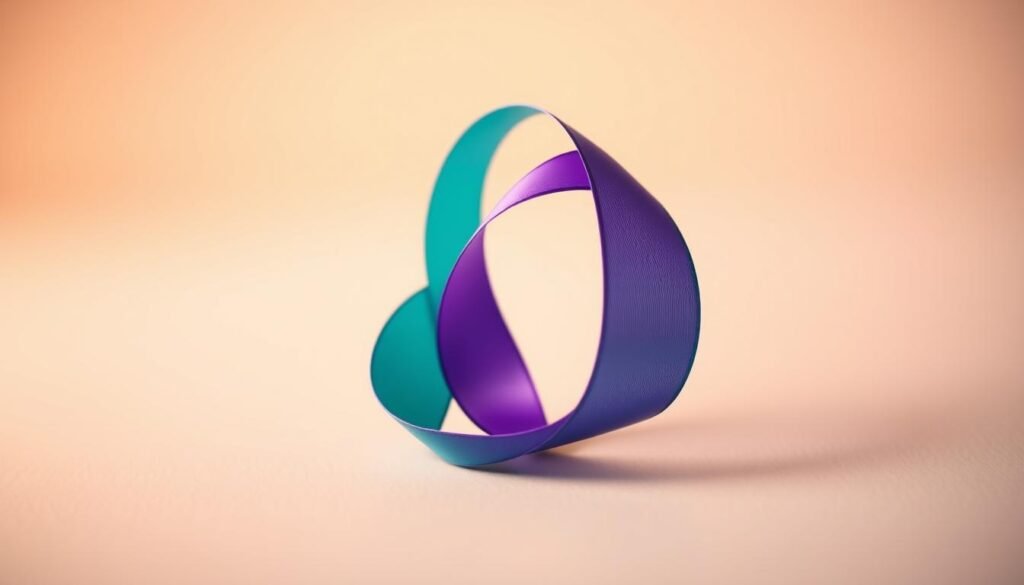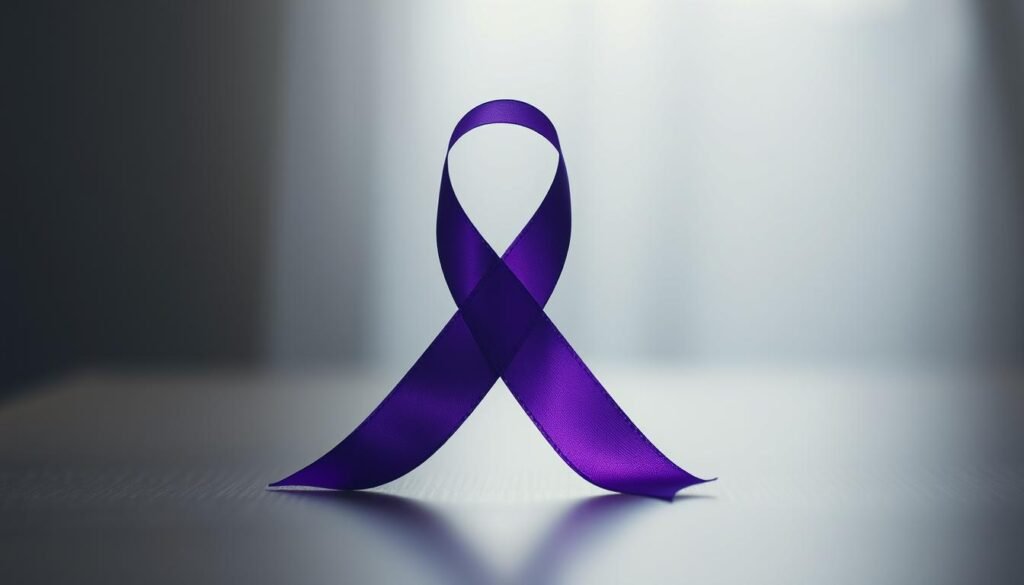Have you ever wondered how a simple ribbon can become a powerful symbol of hope and support? The teal and purple ribbon is more than just a combination of colors—it’s a beacon for mental health advocacy and a reminder of the importance of compassion.
Globally, mental health challenges affect millions, with statistics showing that 1 in 8 Australians has been impacted. This guide dives into the history of the teal and purple ribbon, its role in campaigns, and how you can show your support. Understanding the psychology behind these colors can help raise awareness and foster a deeper connection to the cause.
By exploring the symbolism and initiatives tied to this ribbon, you’ll gain insights into how small actions can make a big difference. Let’s uncover the story behind this meaningful emblem and learn how to contribute to a brighter, more supportive future.
Key Takeaways
- The teal and purple ribbon symbolizes mental health advocacy and support.
- Understanding color psychology can enhance awareness efforts.
- Globally, mental health challenges impact millions, highlighting the need for action.
- This guide explores the ribbon’s history, campaigns, and ways to show support.
- Small actions, like wearing the ribbon, can make a significant impact.
Introduction to Suicide Awareness Color
Symbols often carry profound meanings, and the teal and purple ribbon is no exception. This awareness ribbon represents a blend of hope, strength, and solidarity, making it a powerful tool in advocacy campaigns.
What is the Suicide Awareness Color?
The teal purple ribbon is a symbol that stands for multiple causes, including suicide prevention, domestic violence, and sexual assault. Teal signifies renewal and hope, while purple embodies strength and remembrance. Together, these colors create a message of resilience and support.
Organizations like the Yellow Ribbon Suicide Prevention Program have adopted this ribbon to spread awareness. Its dual colors help bridge the gap between different causes, fostering a sense of unity among advocates.
Why is Color Important in Awareness Campaigns?
Colors play a crucial role in advocacy by evoking emotional responses. For example, pink is synonymous with breast cancer, while red represents addiction. Similarly, the teal purple ribbon connects people to the cause through its visual impact.
Color psychology shows that teal inspires calmness and renewal, while purple conveys dignity and remembrance. These emotional connections make the ribbon a compelling symbol in mental health awareness campaigns.
By comparing it to other cause-specific ribbons, it’s clear that colors are more than just visual elements—they are tools for communication and connection. The awareness ribbon continues to be a beacon of hope for millions worldwide.
The Symbolism Behind the Suicide Awareness Color
Colors have a unique way of conveying messages that words often cannot. The teal and purple ribbon is a symbol that speaks volumes about resilience, renewal, and remembrance. Together, these colors create a dual message that resonates deeply with those affected by mental health challenges.

Teal and Purple: A Dual Message of Hope and Remembrance
Teal is often associated with renewal and calmness. It’s linked to causes like PTSD and ovarian cancer, symbolizing a fresh start. Purple, on the other hand, represents dignity and strength. It’s tied to conditions like lupus and pancreatic cancer, honoring those who have faced adversity.
When combined, these colors address both prevention and the lives lost. Teal inspires hope for a better future, while purple serves as a tribute to those who have struggled. This duality makes the ribbon a powerful tool for advocacy.
How Colors Influence Emotional Responses
Studies in color psychology show that teal has a calming effect, much like blue. It encourages feelings of peace and renewal. Purple, with its regal undertones, evokes strength and remembrance. Together, they create a balanced emotional response.
In contrast, single-color ribbons like green for mental health or red for addiction focus on one aspect. The teal and purple combination broadens the conversation, addressing related issues like domestic violence and sexual assault. This approach fosters a more inclusive dialogue.
By understanding the emotional responses these colors evoke, we can better connect with the cause. The ribbon becomes more than just a symbol—it’s a call to action and a reminder of the importance of compassion.
Suicide Awareness Campaigns and Ribbons
Ribbons have long been a universal symbol of solidarity and support. From breast cancer to mental health, these simple yet powerful emblems unite people across causes. The teal and purple ribbon, in particular, plays a significant role in suicide prevention efforts and related campaigns.

World Suicide Prevention Day and the Role of Ribbons
Every year on September 10, World Suicide Prevention Day brings global attention to this critical issue. Communities worldwide host awareness events, from candlelight vigils to educational workshops. Ribbons are often worn to show support and spark conversations.
Campaigns like #BeThe1To in the U.S. encourage individuals to take actionable steps. Light a Candle events honor those affected, creating a sense of unity. The teal and purple ribbon serves as a visual reminder of the day’s mission.
Other Key Campaigns Featuring the Suicide Prevention Ribbon
Beyond September, the ribbon is prominent in Mental Health Month (May) and Sexual Assault Awareness Month (April). These campaigns highlight the interconnectedness of mental health and other social issues.
The Yellow Ribbon Program focuses on school-based initiatives, educating young people about prevention. It also amplifies marginalized voices, such as those in the LGBTQ+ community, who face higher risks.
Compared to other ribbon campaigns—like pink for breast cancer or red for HIV/AIDS—the teal and purple ribbon bridges multiple causes. This dual focus fosters a broader dialogue and encourages collective action.
How to Show Support Using the Suicide Awareness Color
Small actions can lead to big changes when it comes to supporting mental health causes. One great way to make a difference is by wearing ribbons or other accessories that symbolize solidarity. These simple gestures can spark conversations and show others they are not alone.
Wearing Ribbons and Other Accessories
Wearing a purple ribbon or green ribbons is a meaningful way to show support. Many nonprofits, like the American Foundation for Suicide Prevention, sell these ribbons to fund their initiatives. You can wear them as brooches, bracelets, or even attach them to bags.
For a creative touch, consider car decals, social media frames, or workplace installations. These displays not only raise awareness but also encourage others to join the cause. Every small action contributes to a larger impact.
Organizing and Participating in Awareness Events
Another effective way to show support is by participating in or organizing awareness events. Community walks, educational workshops, and candlelight vigils are powerful ways to unite people around the cause.
Partnering with mental health organizations like NAMI can help amplify your efforts. These partnerships ensure events are impactful and reach a wider audience. Remember, advocacy isn’t limited to September—it’s a year-round commitment.
By taking these steps, you can make a difference and inspire others to do the same. Together, we can create a more supportive and understanding world.
Conclusion
The teal and purple ribbon stands as a powerful reminder of unity and compassion in mental health advocacy. By wearing it, you help foster dialogue and reduce stigma, creating a safe space for those in need.
Sharing resources like the 988 Lifeline can make a difference. It’s a simple yet impactful way to offer support to those struggling. Together, we can amplify the message that no one has to face challenges alone.
Collective responsibility is key. Whether through donations, volunteering, or educating others, every action counts. Let’s normalize conversations about mental health and use visible symbols like ribbons to inspire hope and connection.
FAQ
What is the significance of teal and purple in suicide prevention efforts?
Teal and purple symbolize hope and remembrance, serving as a powerful reminder of the importance of mental health and the need for support in prevention campaigns.
How do colors like teal and purple influence emotional responses in awareness campaigns?
These hues evoke feelings of calmness, compassion, and solidarity, helping to foster a sense of community and understanding around mental health issues.
What role do ribbons play in World Suicide Prevention Day?
Ribbons, especially in teal and purple, are worn to show solidarity, raise visibility, and encourage conversations about prevention and support.
How can I participate in awareness events using the suicide prevention colors?
You can wear teal and purple ribbons, organize events, or share resources on social media to spread the message of hope and support.
Are there other campaigns that use teal and purple to highlight mental health?
Yes, these colors are also featured in campaigns addressing addiction, sexual assault, and other mental health challenges, emphasizing their universal message of care.






